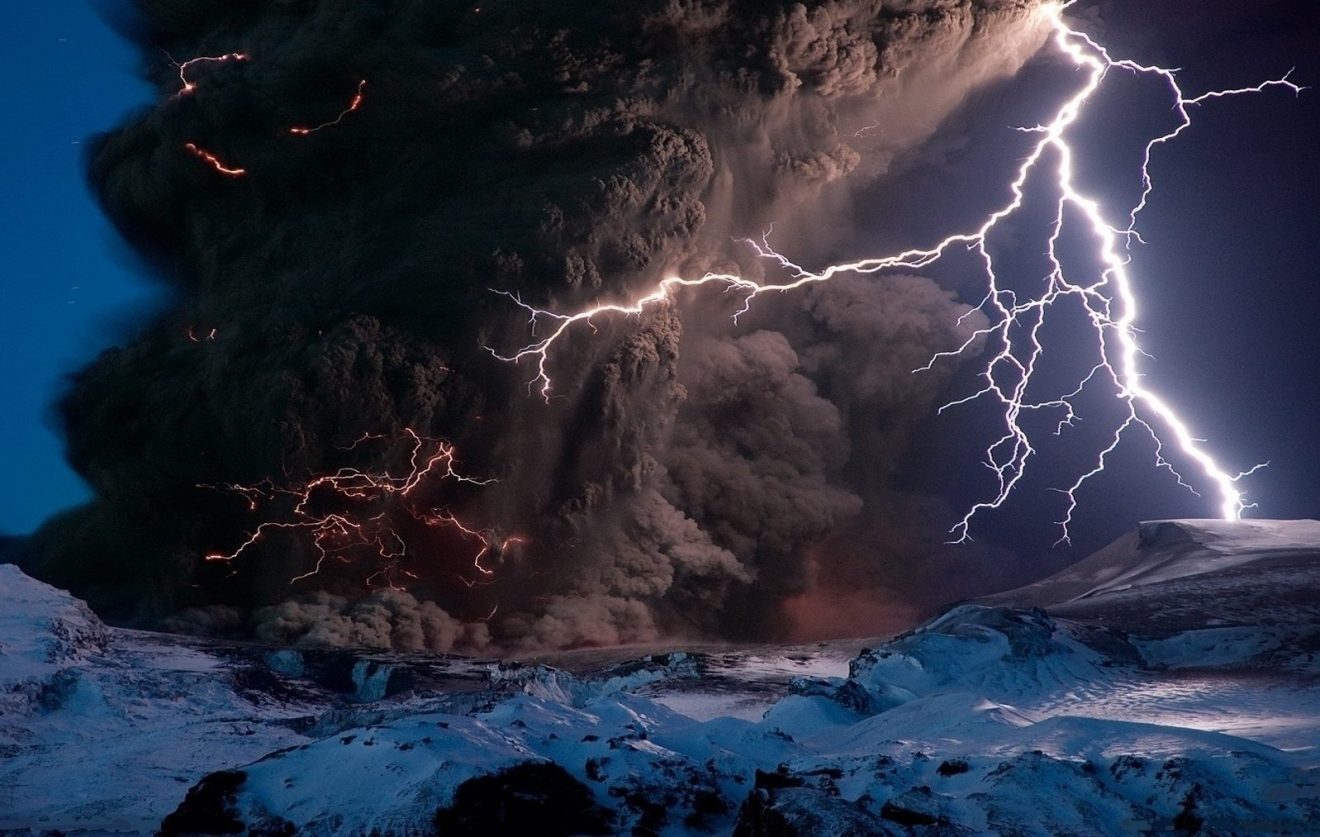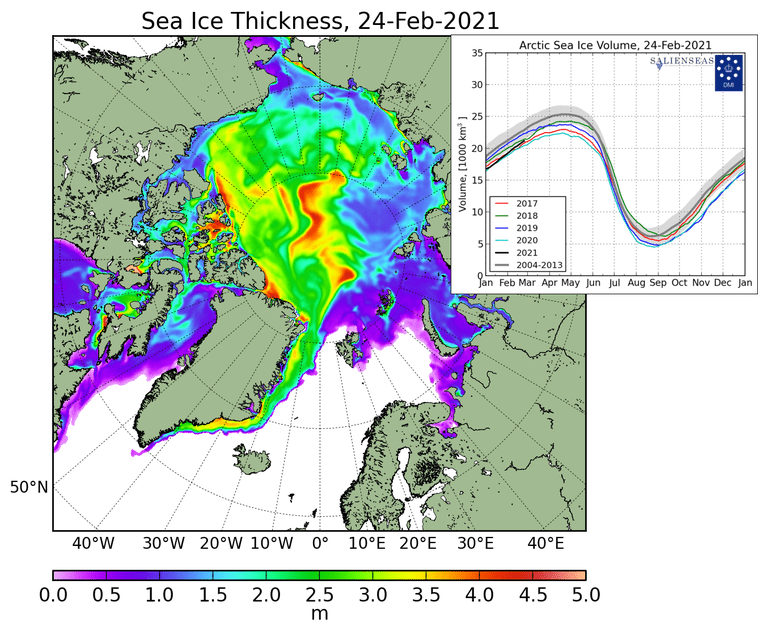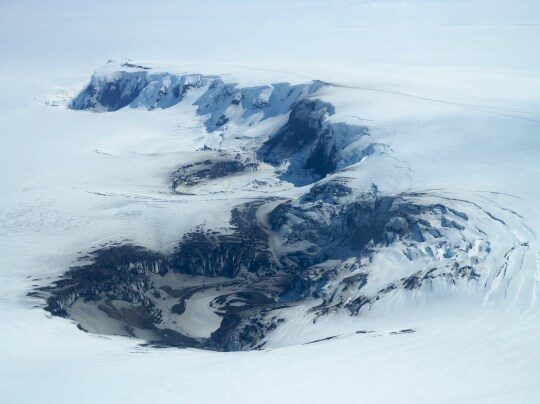NORTHERN HEMISPHERE SNOW MASS JUMPS TO 700 GIGATONS ABOVE 1982-2012 AVERAGE
The latest data point from the Finish Meteorology Institute's (FMI's) "Total snow mass for Northern Hemisphere" chart has been plotted, and it reveals pow-pow across the hemisphere as a whole - excluding the mountains - is riding at some 700 Gigatons above the 1982-2012 average:
This is an impossibility according to the global warming theory whose prime mover and backer, the IPCC, confidently decreed back in 2001 that "milder winter temperatures will decrease heavy snowstorms."
Feel free to shovel this information down the throats of those still insisting the world is burning up and that snowfall is a thing of the past (the UK Met Office, for one).
ARCTIC SEA ICE SEES EXPONENTIAL GAINS
According to official data from the Danish Meteorological Institute (DMI), Arctic Sea Ice Volume is now growing exponentially.
After an admittedly low starting point, sea ice "volume" or "thickness" (which gives you a far better idea of an ice sheet's health than the highly variable "extent") began building at record rates during the start of the season (Sept, 2020) and has now eclipsed recent years and also muscled its way into 2004-2013 average range, in what has been described as a "historic shift."
As visualized below, sea ice in those central Arctic regions is already touching 5 meters (16.4 feet) in thickness (the limit of the DMI chart) with two more months to run before the season's peak in mid/late April:
ICELAND VOLCANOES STIR
Overshadowed by Mt. Etna's amazingly-regular pattern of paroxysms - which have occurred at almost identical intervals of around 35-48 hours over the past 7 days - volcanoes in Iceland have also been stirring.
Of today's reawakening volcanoes, those located in Iceland are perhaps the most concerning. It is this highly-volcanic region that will likely be home to the next "big one" (a repeat of the 536 AD eruption that took out the Roman Republic...?) — the one that will return Earth to another volcanic winter.
Reykjanes and Krýsuvík are the latest Icelandic volcanoes to show serious signs of an imminent eruption, with a large seismic uptick detected along the Reykjanes peninsula:
The previous eruptions at Reykjanes and Krýsuvík were in the years 1830 (VEI 3) and 1340 (VEI 1), respectively, and because it has been hundreds of year since each of these volcanoes last erupted what exactly happens in the lead-up is unclear; however, what is understood is that earthquake activity always increases sharply before an eruption, and can do so a good while before the first eruption happens, writes icelandgeology.net.
Moving on, Grímsvötn is Iceland's most frequently erupting volcano, and over the past 800 years some 65 eruptions are known with some certainty.
Icelandic scientists have been carefully monitoring Grímsvötn since its 20km (66,000 ft) Plinian eruption in 2011; and recently, researchers have seen various signals that suggest the volcano is getting ready to erupt again, and have raised the threat level accordingly.
Katla is yet another Icelandic volcano on the brink of an eruption, according to the Icelandic Meteorological Office (IMO).
Since January of last year, researchers have recorded an uplift in and around the volcano, and more recently have recorded an increase in sulfur dioxide close to where two previous eruptions have taken place. Katla's previous sizable eruption was the VEI 4 back in 1918 (volcano.si.edu) — that year falls within the Centennial Minimum, the previous multidecadal spell of low solar activity.
SEISMIC/VOLCANIC ACTIVITY HAS BEEN CORRELATED TO CHANGES IN THE SUN
Volcanic eruptions are one of the key forcings driving Earth into its next bout of global cooling. Volcanic ash (particulates) fired above 10km - and so into the stratosphere - shade sunlight and reduce terrestrial temperatures. The smaller particulates from an eruption can linger in the upper atmosphere for years, or even decades+ at a time.
Today's worldwide volcanic uptick is thought to be tied to low solar activity, coronal holes, a waning magnetosphere, and the influx of Cosmic Rays penetrating silica-rich magma.
(Read more here)


![Click to enlarge Earthquake activity on the Reykjanes peninsula [Icelandic Met Office].](/image/s30/600418/210224_2130.png)
![Click to enlarge Earthquake activity on the Reykjanes peninsula [Icelandic Met Office].](/image/s30/600419/210224_2130_trace.png)

![Click to enlarge Katla’s 1918 VEI 4 eruption [visitklaustur.is].](/image/s30/600421/katla_1918_1_e1593594463787.jpg)



Reader Comments